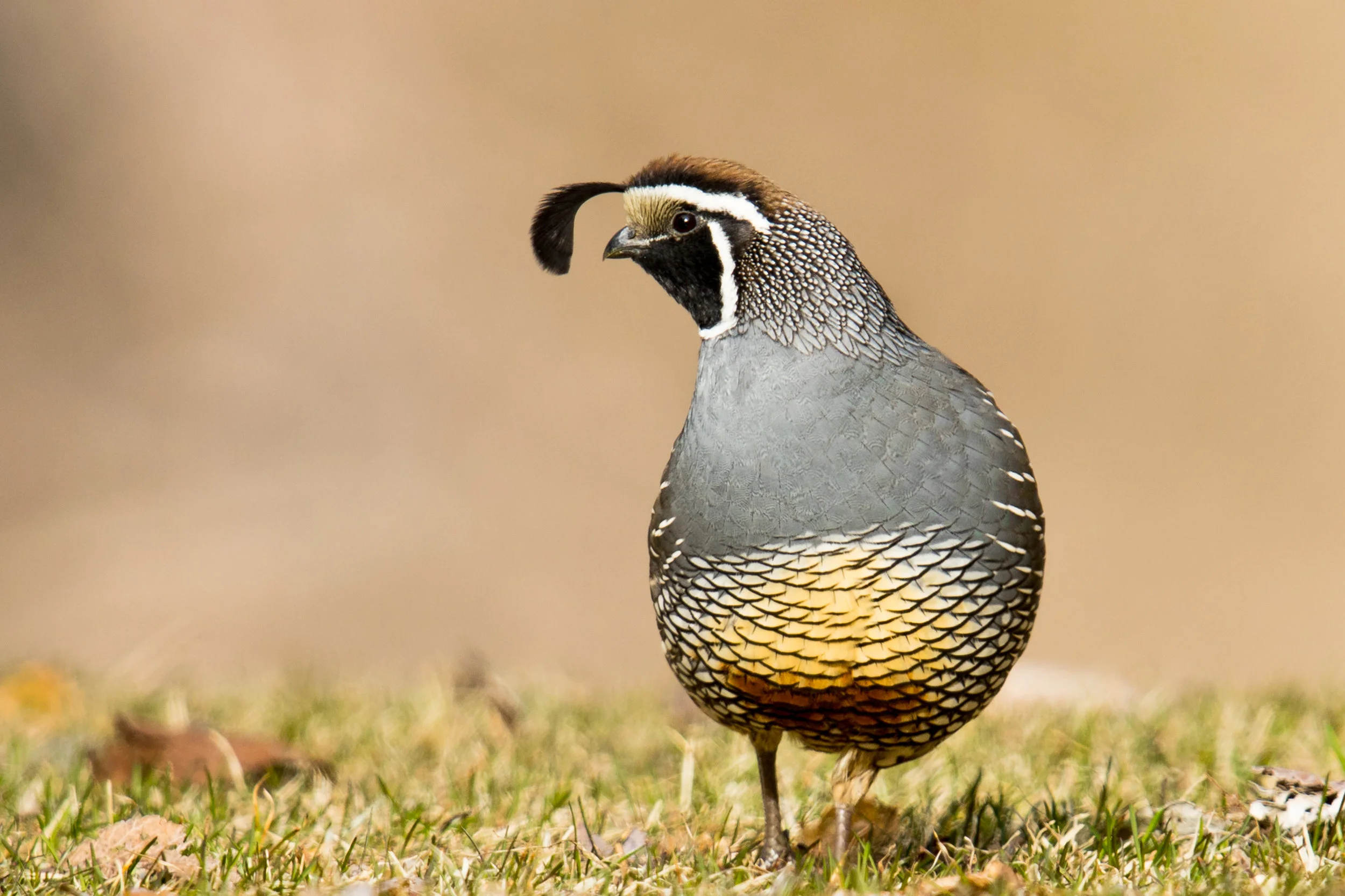Bird of the Month: California Quail
By Hugh Jennings
PC: Mick Thompson (California Quail)
Scientific Name: Callipepla californica
Length 10 in
Wingspan 14 in
Weight 6 oz (180 g)
AOU Band code CAQU
The California Quail (CAQU) is about 10” long with a wingspan of 14” and a weight of 6 oz. (180g). The genus name Callipepla (cal-ih-PEP-lah) is from the Greek kallos, beautiful, and peplos, a ceremonial robe, “beautifully adorned”, in reference to the bird’s plumage. The species name californica (cal-ih-FOR-nih-ca) is Latin for California.
It was originally native and resident along the Pacific coast from south Oregon to north Baja California. It was introduced into other parts of the West. They are usually found in dense cover, often in large groups, and often strutting across open areas, nodding their heads at each step. The CAQU is common in the eastern part of Washington and fairly common in the west at lower elevations, especially farmlands, brushy places, parks and lightly developed residential areas. They are permanent residents throughout their entire range.
Both male and female have a black plume on the forehead and a scaled appearance to the belly. The male has a black chin and light forehead while the female has a light chin.
They eat mostly weeds, grains, grasses and insects, and will come to bird feeders for grain and seeds. It forages by picking up items from the ground, often scratching on the ground, and picking leaves from plants. During the breeding season, the males call loudly to advertise their territory. During courtship, the male postures with wings drooped and tail spread. It bobs its head and may rush at the female.
The nest is usually on the ground, under a shrub or brushpile or next to a log. Sometimes it nest above ground, on a broken-off branch or in an old nest of another bird. The nest is usually built by the female is a shallow depression lined with grass and leaves. Usually 10-16 eggs are laid which are dull white to pale buff, sometimes marked with brown. Incubation is by the female only and takes 18-23 days. Occasionally, two females will lay eggs in the same nest.
The downy young leave the nest within a day after hatching. Both of the parents tend to the young with the female often brooding them when small with the male perching high and acting as a sentinel. The young feed themselves. The young can fly short distances at the age of 10 days and at 14 days fly well but prefer to run to escape. The CAQU usually have one brood per year, but if there is a good food supply they may have two.
The oldest known CAQU was one in the National Zoo in Washington D.C. that lived for 9 years and 7 months. Two males in the wild lived for over 6 years. The birds have been timed in flight at 38-58 mph and their running speed has been timed at 12 mph.


